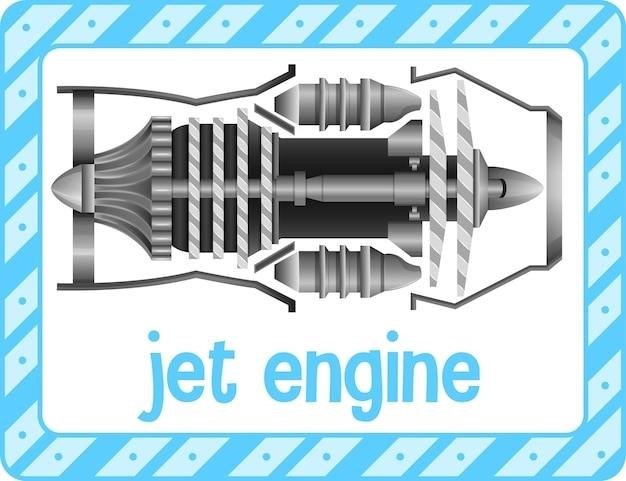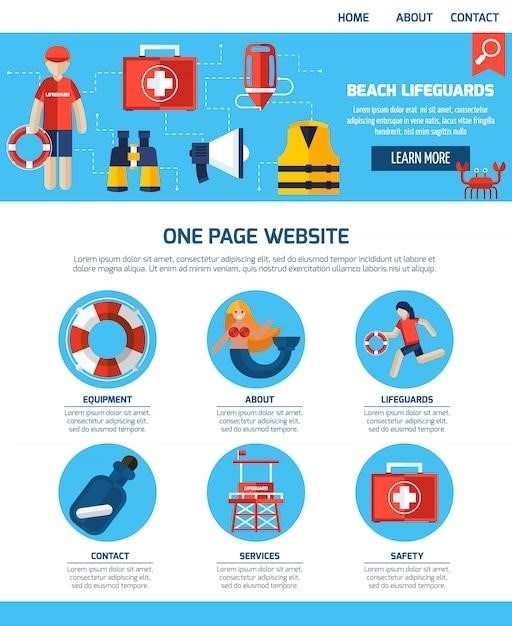Atlas Pinnacle Pristine Warranty⁚ A Comprehensive Overview
This overview details the Atlas Pinnacle Pristine shingle warranty, covering material and labor, wind resistance, algae protection, and impact resistance. Explore the lifetime limited warranty, including conditions, proration, and transfer options. Learn about registration and claim processes.
Warranty Coverage and Duration
The Atlas Pinnacle Pristine roofing shingle boasts a comprehensive limited lifetime warranty, offering protection against manufacturing defects for the lifetime of the original homeowner. This substantial coverage includes a strong initial period of non-prorated protection, typically 10-15 years, covering both materials and labor. After this period, the warranty continues, albeit with a proration factor that may apply after 45 years or 540 months of installation. Specific details regarding proration percentages are outlined in the complete warranty document, readily available for download as a PDF from the Atlas Roofing website or through authorized dealers. This robust warranty underscores Atlas’s confidence in the durability and longevity of its Pinnacle Pristine shingles, providing homeowners with significant peace of mind and long-term protection for their investment.
Material and Labor Warranty Details
The Atlas Pinnacle Pristine warranty comprehensively covers both materials and labor for a specified period. While the full lifetime warranty protects against manufacturing defects in the shingles themselves, the initial years (typically 10-15) offer non-prorated coverage. This means that during this initial timeframe, the homeowner will receive full replacement or repair without any deduction based on the age of the roof; After this initial period, the warranty remains in effect, but any claims may be subject to prorated costs, meaning that the homeowner will share in the expense of repairs or replacements based on the age of the shingles. The precise details of this proration schedule are clearly defined within the complete warranty document. Consult your warranty document or contact Atlas directly for specific details regarding your coverage.
Wind Resistance and Coverage
Atlas Pinnacle Pristine shingles boast significant wind resistance, a crucial aspect of their warranty. The warranty explicitly covers damage resulting from high winds, up to a specified velocity (often around 130 mph). This high wind rating signifies the shingles’ ability to withstand extreme weather conditions, providing homeowners with considerable peace of mind. However, it’s vital to remember that the warranty’s wind coverage is contingent upon proper installation according to Atlas’s guidelines. Improper installation can void or limit wind damage coverage, even if the wind speeds were within the warranty’s stated limits. The warranty document details the specific conditions for wind damage claims, including evidence of proper installation and wind speed verification. Review the full warranty document for all applicable details.
Algae Resistance and Scotchgard Protector
The Atlas Pinnacle Pristine shingle incorporates 3M Scotchgard Protector, offering a significant advantage in algae resistance. This protective technology helps prevent the unsightly black streaks caused by algae growth, a common problem affecting many asphalt shingles. The Scotchgard Protector is a key component of the shingle’s long-term aesthetic appeal and contributes to maintaining the roof’s curb appeal over its lifespan. The warranty often includes a specific clause addressing algae resistance, typically guaranteeing protection against algae-related staining for the lifetime of the original homeowner. This protection is a significant selling point for homeowners concerned about the long-term appearance of their roof. The warranty details the specific conditions under which algae-related claims will be considered, emphasizing the importance of regular roof maintenance. Consult your warranty document for precise coverage details.
Impact Resistance and Class Rating
Atlas Pinnacle Pristine shingles boast a Class 3 impact resistance rating, signifying their ability to withstand impacts from common airborne debris such as hail. This high rating contributes to the shingle’s overall durability and longevity, reducing the likelihood of damage from accidental impacts. The impact resistance is a crucial factor in the shingle’s overall performance and is often a key element in determining its warranty coverage. A higher impact resistance rating generally translates to a stronger warranty against damage caused by impacts. This feature provides homeowners with added peace of mind, knowing their roof is better protected against unforeseen events. The Class 3 rating often qualifies homeowners for potential insurance discounts, further enhancing the value proposition of choosing Pinnacle Pristine shingles. The warranty details should explicitly address coverage for damage resulting from impacts, outlining the conditions under which claims will be considered.
Understanding the Atlas Lifetime Limited Warranty
This section clarifies the Atlas Lifetime Limited Warranty’s terms, including conditions, limitations, and proration details after 45 years of installation. It also explains the warranty transfer process to new homeowners.
Lifetime Warranty Conditions and Limitations
The Atlas Pinnacle Pristine Lifetime Limited Warranty covers manufacturing defects, but excludes damage from normal wear and tear, improper installation, or acts of God. Proper installation by a qualified contractor is crucial for warranty validity. The warranty applies only to the original homeowner unless properly transferred within the first ten years. Specific exclusions may include damage caused by extreme weather events exceeding the stated wind resistance limits of 130 mph. This lifetime warranty may have proration aspects after a certain number of years, typically 45 years, meaning the manufacturer’s responsibility for repairs or replacements may be reduced. Always review the complete warranty document for exhaustive details and limitations before purchasing and installing the shingles.
Proration After 45 Years
After 45 years (or 540 months), the Atlas Pinnacle Pristine Lifetime Limited Warranty transitions to a prorated coverage model. This means that Atlas’s financial responsibility for repairs or replacements diminishes. The exact proration percentage isn’t explicitly stated in the provided text snippets but is mentioned as a “10 proration factor” for the original homeowner. This likely means a percentage reduction in the cost of repairs or replacements covered by the warranty. Contacting Atlas directly or reviewing the full warranty document is essential for understanding the precise terms and conditions of the proration schedule. The proration only affects the original homeowner; transferring the warranty may alter these terms. This is a significant detail to consider when evaluating the long-term value proposition of the Pinnacle Pristine shingles.
Transferring the Warranty to a New Homeowner
The Atlas Pinnacle Pristine warranty’s transferability to a new homeowner is a key consideration. While the warranty is described as a “lifetime” warranty, this typically refers to the lifetime of the original homeowner, not the roof itself. The provided text indicates that transferring the warranty is possible, but only within a specific timeframe – likely within the first ten years of the original purchase. The exact process and requirements for a successful transfer are not detailed in the available excerpts. To ensure a smooth transfer, it is crucial to consult the complete warranty document or contact Atlas Roofing directly. Failure to adhere to the transfer guidelines might void the warranty for subsequent owners. Therefore, understanding the transfer procedure before purchasing the shingles is paramount.
Accessing and Registering Your Warranty
Register your Atlas Pinnacle Pristine warranty online. This process requires specific documentation for future claims. Contact Atlas Roofing for assistance with registration or warranty support.
Online Warranty Registration Process
To register your Atlas Pinnacle Pristine shingle warranty online, visit the Atlas Roofing website. You’ll typically find a dedicated section for warranty registration, often linked from the product page or a customer support area. The online registration form will likely require information such as your name, address, contact details, purchase date, and the roofing contractor’s information. You might also need to upload a copy of your purchase invoice or other supporting documentation as proof of purchase and installation. Ensure all information is accurate to avoid delays in processing your warranty registration. Upon successful submission, you’ll receive a confirmation email or notice indicating that your warranty is registered. This confirmation acts as proof of registration, crucial for any future warranty claims. Keep this confirmation information in a safe place, easily accessible should you need it. The process is designed for efficiency but may vary slightly depending on the current Atlas Roofing website structure. Always refer to the website for the most up-to-date registration instructions.
Required Documentation for Warranty Claims
Filing a warranty claim for your Atlas Pinnacle Pristine shingles requires specific documentation. Crucially, you’ll need proof of purchase, typically the original invoice from your roofing contractor. This invoice should clearly detail the date of purchase, the quantity of shingles, and the contractor’s contact information. High-quality photographs documenting the damage to your roof are essential. Capture multiple angles showing the extent and nature of the damage. A detailed description of the damage is also necessary, outlining when the damage occurred and any potential contributing factors. Contact Atlas Roofing directly to understand their specific claim form and submission process. They may request additional information or documentation, depending on the nature of the claim. Remember to retain copies of all submitted documents for your records. Promptly submitting a complete and accurate claim increases the likelihood of a smooth and timely resolution. Atlas may also ask for your warranty registration information, so having that readily available is essential.
Contacting Atlas for Warranty Support
For assistance with your Atlas Pinnacle Pristine warranty, several avenues are available. Atlas’s website likely provides contact information, including phone numbers and email addresses dedicated to warranty inquiries. Their website may also feature an online contact form for submitting questions or initiating a claim. Check their website for FAQs or a dedicated warranty support section. This often contains answers to common questions and simplifies the process. Consider searching for local Atlas Roofing contractors; they may offer direct support and assistance with warranty claims. They can also provide valuable insights into the claim process based on their experience. Remember to keep your warranty documentation readily available when contacting Atlas. Having the necessary information prepared will streamline the communication and expedite the resolution of your issue. Be prepared to describe the issue clearly and concisely, providing relevant details and documentation as needed. Prompt and efficient communication is key to a successful warranty claim.
Comparing Atlas Pinnacle Pristine to Other Shingles
This section analyzes Pinnacle Pristine against competitor shingles, comparing warranties, features, benefits, and pricing to determine overall value and suitability for your roofing needs.
Warranty Comparison with Competitors
Direct comparisons of Atlas Pinnacle Pristine’s warranty with those offered by major competitors like CertainTeed, Owens Corning, and GAF are crucial for informed decision-making. Key aspects to compare include the length of the warranty period (both material and labor), the extent of coverage (e.g., wind damage, algae resistance, impact resistance), and any limitations or exclusions. Analyzing warranty terms reveals whether Pinnacle Pristine offers superior protection, competitive coverage, or falls short compared to alternatives. Consider the non-prorated periods, any proration factors after a certain number of years, and the transferability of the warranty to future homeowners. A comprehensive comparison helps determine which shingle brand provides the most comprehensive and reliable long-term protection.
Features and Benefits Comparison
A detailed feature and benefit comparison against competing architectural shingles is essential. Consider factors such as shingle weight and thickness (influencing durability), the presence of enhanced features like Scotchgard Protector (for algae resistance), and the impact resistance rating (Class 3 or higher). Analyze the aesthetic qualities, including color options and dimensional design, to assess curb appeal. Evaluate the ease of installation and the overall cost-effectiveness, considering initial price and long-term maintenance needs. Compare the performance characteristics under various weather conditions, especially wind resistance, to determine which shingle best suits your climate and roofing needs. This comprehensive analysis will reveal the strengths and weaknesses of Pinnacle Pristine relative to other options.
Price Point and Value Analysis
Analyzing the price point of Atlas Pinnacle Pristine shingles requires a comparative approach. Consider the cost per square foot against comparable shingles from other manufacturers, factoring in the warranty’s length and coverage. Evaluate the overall value proposition by considering the initial investment alongside the long-term benefits. A cost-benefit analysis should weigh the upfront expense against potential savings from reduced maintenance and repair costs over the shingle’s lifespan. The inclusion of features like Scotchgard Protector and a high impact resistance rating should be factored into the value assessment. Finally, investigate any potential rebates or discounts offered by the manufacturer or roofing contractors to determine the true cost and overall value.
Additional Resources and Information
Find FAQs, locate Atlas Roofing contractors, and access further details on the Atlas website for comprehensive support; Explore additional resources and product information for a complete understanding.
Atlas Roofing Website and Support
The official Atlas Roofing website serves as a comprehensive resource for all things related to their products, including the Pinnacle Pristine shingles. Here, you can access detailed warranty information, often in downloadable PDF format, providing a convenient reference guide. The site usually features a dedicated section for warranties, offering clear explanations of coverage, terms, and conditions, along with contact details for customer support. Should you encounter any difficulties navigating the website or require specific assistance with your warranty, the customer service team is readily available via phone or email, ensuring prompt and helpful responses to your inquiries. Don’t hesitate to utilize this valuable resource for a seamless warranty experience.
Frequently Asked Questions (FAQ)
Atlas Roofing’s website likely includes a dedicated FAQ section addressing common questions about the Pinnacle Pristine warranty. This section may cover topics such as the warranty’s duration, what is and isn’t covered under the warranty, the process for filing a claim, required documentation, and timelines for claim processing. You might find answers regarding transferability of the warranty to new homeowners and the impact of roof repairs or modifications on warranty coverage. The FAQ may also explain the proration process after a certain number of years and how to contact Atlas for warranty support. Reviewing this section before contacting customer support can save time and provide immediate answers to frequently encountered questions.
Finding Local Atlas Roofing Contractors
Locating certified Atlas Roofing contractors is crucial for ensuring proper installation and maintaining your warranty. Atlas’s website may offer a contractor locator tool, allowing you to search by zip code or address to find professionals in your area. This tool may also display contractor profiles, including certifications, reviews, and contact information. Alternatively, you could perform an online search for “Atlas Roofing contractors near me,” which may yield results from various listing sites and contractor websites. When contacting potential contractors, it’s vital to verify their certification and experience with Atlas Pinnacle Pristine shingles to guarantee seamless installation and warranty compliance. Confirming their licensing and insurance is also a recommended step.























